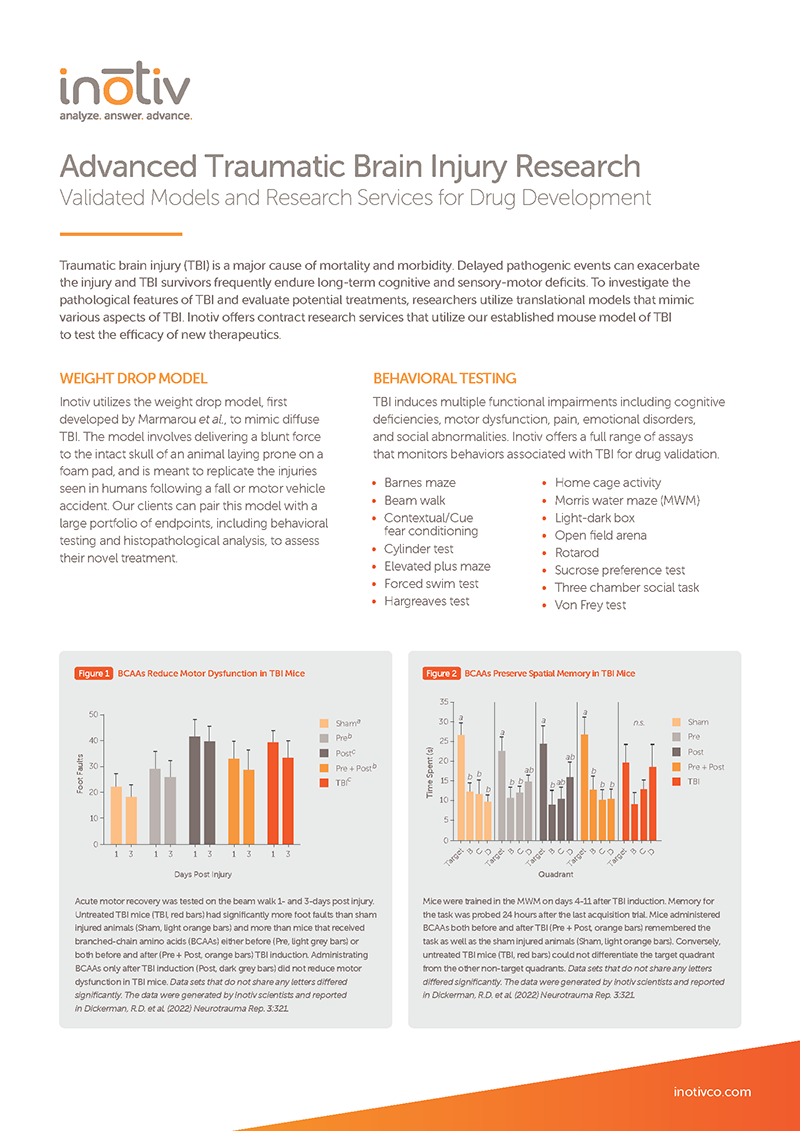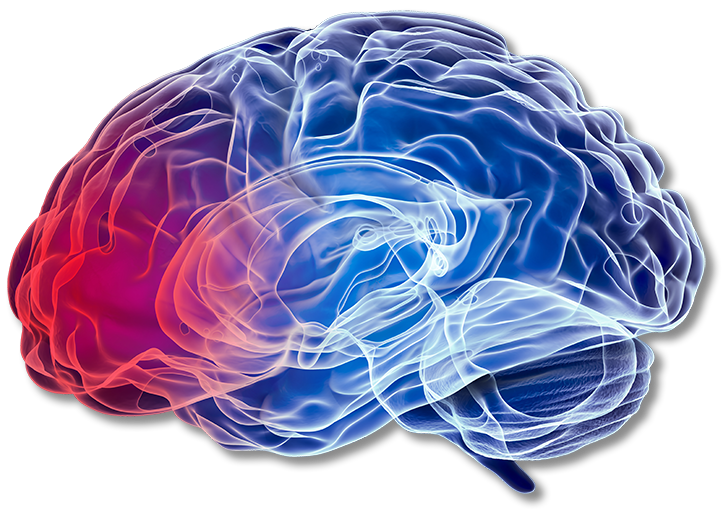Traumatic Brain Injury
Specialized Models for Discovering Next-Generation Therapies

Traumatic brain injury (TBI) is a major cause of mortality and morbidity. Delayed pathogenic events can exacerbate the injury, and TBI survivors frequently endure long-term cognitive and sensory-motor deficits. To investigate the pathological features of TBI and evaluate potential treatments, researchers utilize translational models that mimic various aspects of TBI. Inotiv offers a rodent TBI model and contract research services tailored to evaluate the efficacy of novel therapeutics in tackling this complex condition.
Models of TBI
We offer a TBI model that replicates key aspects of diffuse brain injury. Explore how our model can impact your drug discovery program.
Weight Drop Model
Model Summary
The weight drop model, developed by Marmarou et al., is used to mimic diffuse TBI. The model involves delivering a blunt force to an intact skull. The injury diffuses throughout the brain, replicating injuries seen in humans following a fall, motor vehicle accident, or direct impacts to the head. Additionally, the animal lays prone on a foam pad, which minimizes the risk of contrecoup injuries by reducing the deceleration of the animal’s head post-impact.
Study Design

Validation Data

Acute motor recovery was tested on the beam walk 1- and 3-days post injury. Untreated TBI mice (TBI, red bars) had significantly more foot faults than sham injured animals (Sham, light orange bars) and more than mice that received branched-chain amino acids (BCAAs) either before (Pre, light grey bars) or both before and after (Pre + Post, orange bars) TBI induction. Administrating BCAAs only after TBI induction (Post, dark grey bars) did not reduce motor dysfunction in TBI mice. Data sets that do not share any letters differed significantly. The data were generated by Inotiv scientists and reported in Dickerman, R.D. et al. (2022) Neurotrauma Rep. 3:321.

Levels of the tissue damage marker UCH-L1 in the cortex of mice subjected to TBI were measured by ELISA. Significant increases in UCH-L1 were observed in TBI mice (red bars) compared to sham operated mice (orange bars) at most time points after injury induction. Data sets that do not share any letters differed significantly.
Not seeing the model you need? Contact us to discuss developing a new disease pharmacology model for your preclinical research program.
Behavioral Testing for TBI Models
TBI induces multiple functional impairments including cognitive deficiencies, motor dysfunction, pain, emotional disorders, and social abnormalities. We offer a full range of assays that monitors behaviors associated with TBI for therapy validation.
- Elevated plus maze
- Light-dark box
- Open field arena
- Beam walk
- Rotarod
- Morris water maze
- Barnes maze
- Forced swim test
- Sucrose preference test
- Three chamber social task
- Contextual/Cued fear conditioning
- Cylinder test
- Home cage activity
- Hargreaves test
- Von Frey test
Additional Endpoints for TBI Research
Our capabilities extend beyond models and behavioral testing. We have a broad range of GLP and non-GLP in vivo and in vitro assays that can be customized to provide solutions for your drug discovery program.
- Histopathological assessment
- Stereotaxic surgery
- Tissue harvesting
- Oxidative stress enzymology
- Neurotransmitter and metabolite quantification
- CBC/clinical chemistry analysis
- Mass spectrometry proteomics
- Primary neural cell culturing
- Human stem cell and brain organoid culturing
- Confocal & electron microscopy
References
- Marmarou, A. et al. (1994) J. Neurosurg. 80:291.
- Dickerman, R.D. et al. (2022) Neurotrauma Rep. 3:321.




